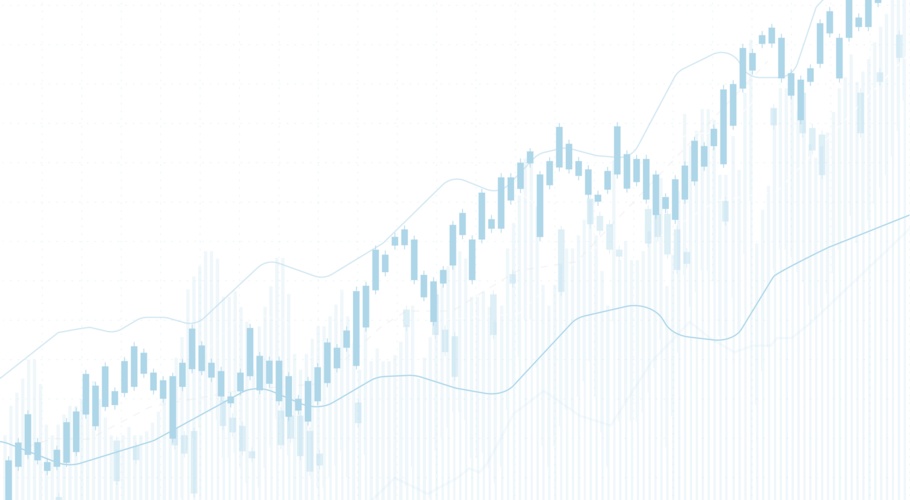Where to next for the big four?
One of the biggest market stories of 2024 has been the performance of the local banking sector, led by Commonwealth Bank of Australia’s (ASX: CBA) rise to record highs. The big question now on the mind of investors, is whether the sector’s run can continue – and which of the big four may be better positioned than rivals.
AUSIEX asked John Lockton, Head of Investment Strategy at Sandstone Insights, to give his outlook for the sector, from the majors to smaller regional banks and Macquarie Group.
What is driving the share price performance of banks?
Banks have been a momentum trade all year, driven by an improvement in earnings. An improved outlook has meant institutional investors – who were previously underweight the sector – have bought more stock.
The improved earnings outlook is driven by two factors:
- Evidence that mortgage competition – and its impact on net interest margins – is easing.
- The fact that bad and doubtful debts haven’t risen significantly with interest rates.
It also seems that investors are getting ahead of potential rate cuts by increasing their allocation to banks. Cyclical stocks become popular when rates fall – and the best way cyclical play in Australia is the banking sector, just by its sheer market capitalisation.
Finally, global investors often look at Australia as a call on banks or the resources sector. Resource stocks are trading at calendar year lows due to China’ economic outlook, so some of the capital otherwise invested in resource companies has gone to banks instead.
Is Commonwealth Bank’s share price justified?
Commonwealth Bank of Australia (ASX:CBA) is an extremely well run bank. Its cost of capital is lower than its peers and its return profile is higher than peers.
It has delivered very strong operational performance and its management team is easily the best in the sector.
It continues to gain market share in areas it chooses to do so and continues to be disciplined in terms of allocating capital – which can actually mean giving up market share (as it has in home loans recently).
In the short term, the share price will probably go sideways and we have a “hold” recommendation on it.
The share price will get some support until late September while CBA buys back shares to neutralise its dividend reinvestment programme.
The test will come after that – because at some point, valuation will come into play. CBA is trading at a multiple of close to three times book with very little to suggest earnings will break out or a new area of growth will emerge. In that context, it’s hard to see that multiple as sustainable.
What impact will regulatory issues have on ANZ?
Where there's smoke, there's fire – and there's clearly an ESG issue with ANZ (ASX: ANZ), specifically the “G”.
We have a “sell” rating on the stock.
One issue is that ANZ’s chief executive officer (CEO) has been in the chair for more than eight years. That is the longest tenure of any major bank CEO.
The Royal Commission was some years ago but the Australian Prudential Regulation Authority has just increased ANZ’s operational risk capital add-on by $250 million to $750 million. This additional impost is a result of the heightened concerns about the bank’s non-financial risk management.
In addition to the APRA action, there remains the potential for civil proceedings, regulatory fines and enforceable undertakings to be imposed on the bank.
ANZ is optically the cheapest of the major banks. But a regulatory reset cause reputation damage, which impacts business volumes, and is also a major expense for a company. The result is that it becomes an earnings issue.
Furthermore, ANZ’s Suncorp acquisition is unlikely to earn its costs of capital as it paid 1.3 times book value to buy it. It raised equity at a discount to book value to do so.
Can NAB keep up its solid run?
Institutional investors appear to love NAB (ASX: NAB) more than other majors and most hold overweight positions in the stock.
The question now is whether the previous cadence of improvement and operational excellence will continue under its new CEO Andrew Irvine, or if its earnings growth will slow.
As a result, we have a “hold” recommendation on NAB.
On the upside, NAB has a strong capital position and a reasonable business mix.
But it has recently lost market share in housing and business banking at the margins, most likely to CBA. It’s too early to know if this is a trend – but there are cracks appearing in the story that characterised NAB under former CEO Ross McEwan.
Is it time to add Westpac to portfolios?
Westpac (ASX: WBC) is the second cheapest of the major banks and still very much in the renovation camp. It has operational momentum and is winning market share – but still lacks the operational excellence of other banks.
We have a “hold” recommendation on Westpac but on a short-term basis it would be our preferred pick of the sector.
One of its big issues remains its systems. It has a plan underway to address that issue, but it only goes part of the way to getting all customers onto a common platform.
This means its return profile is structurally less than its competitors. It will take money and time to catch up with the tech stack that underpins CBA.
Are Macquarie Group or regional banks more attractive?
Regional banks remain structurally challenged and are not a great way to put money to work. Total shareholder returns not only underperform the large banks, but also the broader market.
Bank of Queensland, for example, has a 10-year total shareholder return of -11%. That compares to 171% for CBA and 100% for NAB. Westpac and ANZ both recorded total shareholder returns in excess of 50% in the same period.
Macquarie is a different kettle of fish. Its four areas of focus – technology, energy, new energy markets, and infrastructure and asset management – are key structural growth areas for the global economy.
Macquarie’s big opportunity over the medium term is to prove the equity it has deployed into alternative asset markets can generate the anticipated returns – and encourage investors to think about it as an asset management firm rather than a cyclical investment bank.
If interest rates fall, the squeeze on capital globally should end and fire up areas of Macquarie’s business that drove its downgrades over the last 18 months.
Never miss an article - sign up to the monthly AXIS email newsletter.
This article was prepared by Sandstone Insights Research. The information and opinions contained within Sandstone Insights Research is prepared by MST Financial Services Pty Ltd (ABN 54 617 475 180, AFSL 500557). Sandstone Insights is a registered business name of MST. Sandstone Insights and MST produce research under a contractual arrangement for AUSIEX and are not otherwise associated with AUSIEX.

